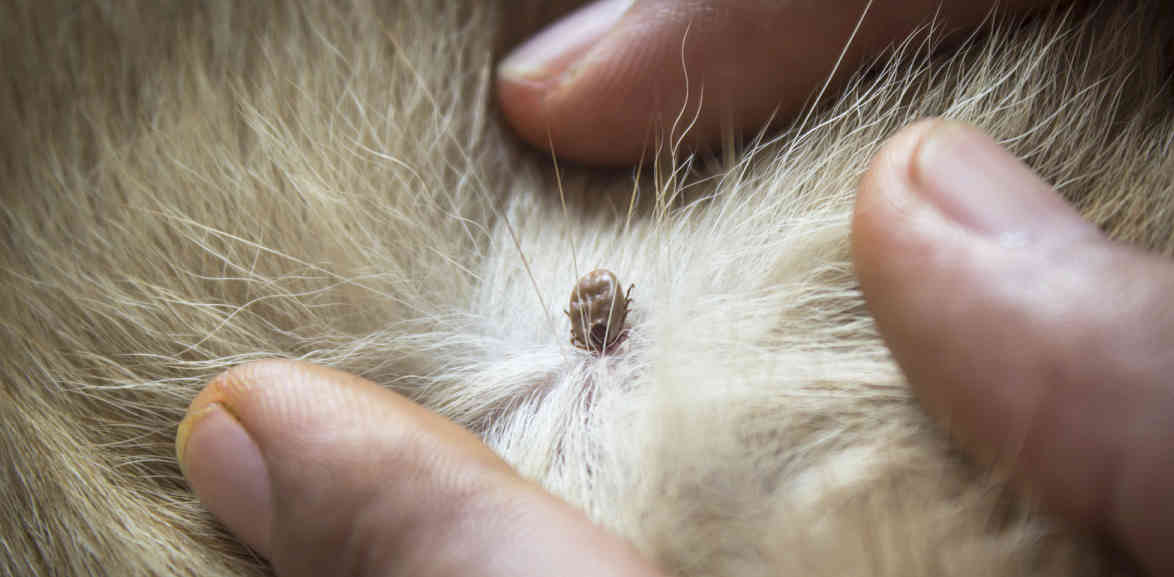Flea control for puppies is very important because fleas on a very young puppy are much more than a mere irritation. In fact, they can even be fatal as they can cause anaemia.
But most commercial flea control products are not safe for use on puppies that are younger than 6 weeks old and can be dangerous for your puppy. So what do you do if you have a young puppy with a flea infestation?

Flea control for puppies
The answer is that you must do three things: manually treat the puppy by bathing it and then picking off any fleas that are still there afterwards, treat the mother and treat the environment
Treating the puppy
While there are some flea treatments that are safe for treating older puppies you should always check with your vet before using any flea product on a puppy and you should definitely not use any flea treatment on a puppy that is less than six weeks old.
The best way is to treat the fleas manually by bathing the puppy in a mild puppy shampoo and then removing any remaining fleas from the coat with a flea comb.
- Start by standing the puppy in a bath or plastic basin and pour a jug of warm (not hot) water over his coat while holding him by the collar. (Note: If you are using the bath, put a rubber shower mat down so the puppy doesn’t slip)
- Pour on the puppy shampoo and build up a lather over the entire body, except the head. Be careful not get water or soap in the puppy’s eyes.
- Lather the puppy’s head with shampoo poured onto your hands, being careful again to avoid the eyes and mouth.
- Rinse and dry the puppy’s head thoroughly, before rinsing the rest of the body.
- Rinse the rest of the body with warm water.
- Squeeze excess water from the coat, then lift the dog out of the bath and dry with a towel.
- Be sure that the puppy is kept warm, then begin working through the coat with a flea comb. You’ll find that many of the fleas are dead, and that the live ones struggle to get through the damp fur.
- Remove all the fleas from the coat and drop them into a bowl of water with dish-washing liquid, which generally kills them.
Treating the mother
If your pup has a flea infestation his mother will do too, and unless you treat the mother the puppy will soon be re-infested.
However, you should never use a standard flea medication on a nursing mother. There are products on the market that claim to be safe, but always speak to your vet first and get their recommendations.
If there are other pets in the home, be sure to treat them also.
Treating the environment
No flea treatment is complete unless you also treat the environment.
You basically have two options, to do it yourself, or call in a professional pest controller. It you use a professional, be sure to let them know that you have pets, so they can use a pet-safe product.
If you go the DIY route, you have a choice of a spray treatment or an aerosol “bomb”. Read the instructions and warnings on the can carefully, and take all necessary precautions to avoid exposing your pets to the toxins. That includes small pets like birds, fish and rodents.
Frequent vacuuming will also remove fleas,their eggs and larvae. A useful tip is to put a flea collar in the vacuum cleaner bag, as this will kill the fleas as you vacuum them up.
Pay special attention to skirting boards, corners and other nooks and crannies, as this is where the flea larvae are likely to hide. Also vacuum furniture and curtains and be sure to empty the vacuum cleaner after each use to prevent fleas escaping. These relatively simple measures will usually provide effective flea control for puppies.
